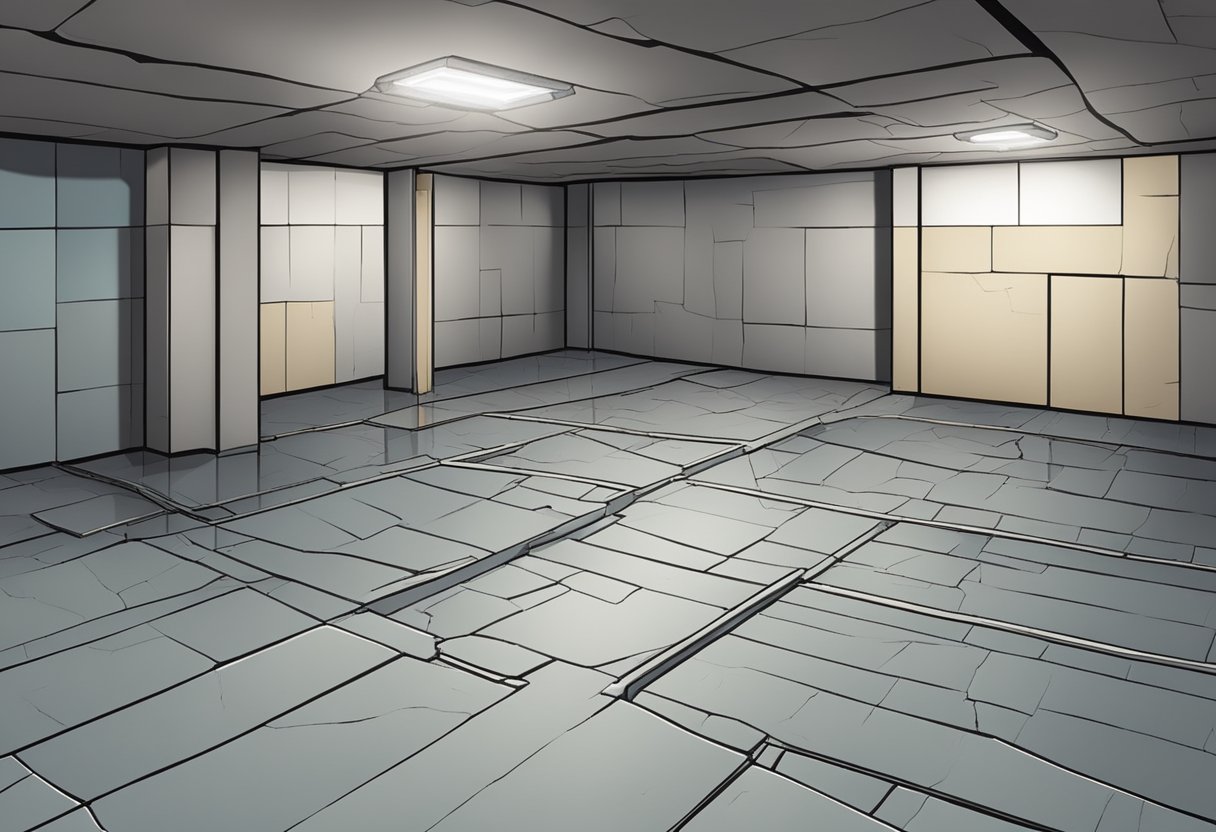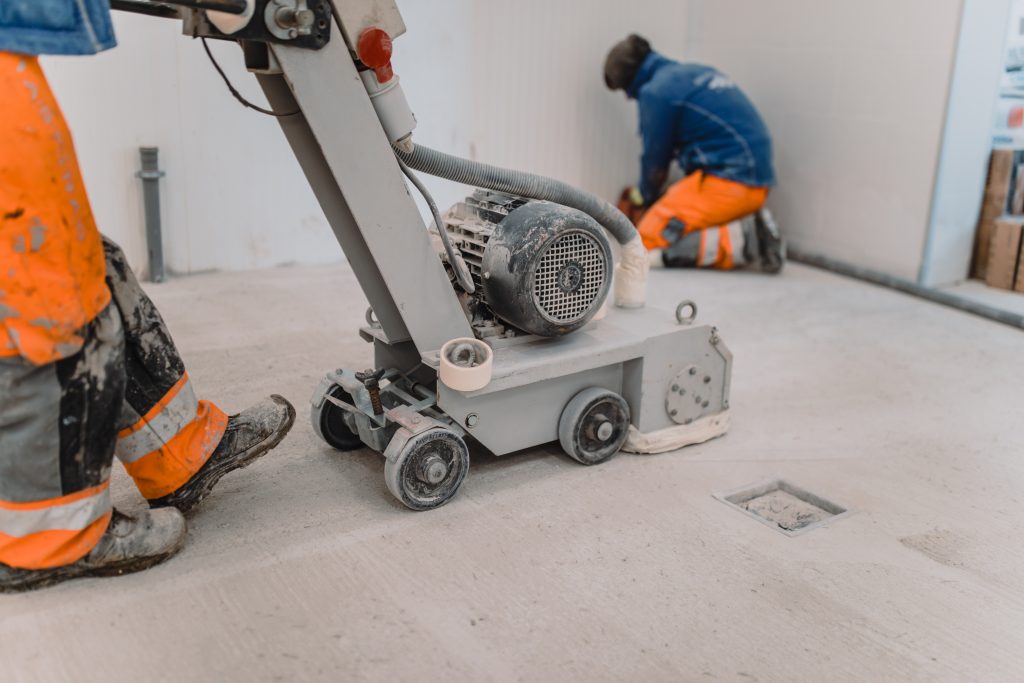Discovering cracks in a basement floor can be concerning for any homeowner. While these cracks can be a common occurrence, it’s important to address them promptly to prevent potential water intrusion and to maintain the structural integrity of the home. Repairing cracks in the basement floor does not have to be an overly complex or expensive process. With the right tools and techniques, homeowners can effectively manage minor repairs, or choose to seek professional assistance for more significant concerns.
Cracks in basement floors could arise from a variety of causes, such as concrete shrinkage, thermal movement, or pressure from the soil underneath. Before undertaking any repair work, understanding the root cause of the cracks is essential. This knowledge not only helps in choosing the appropriate repair method but also in taking preventive measures to avoid future damage.
When it comes to basement floor crack repair, the method chosen will depend on the size and severity of the cracks. For small, hairline cracks, simple DIY solutions using concrete sealants or compounds are often sufficient. However, larger cracks may require the use of more advanced techniques such as epoxy injections or routing and sealing. Throughout the repair process, safety is paramount, and the use of proper protective equipment is advised.
Understanding Basement Floor Cracks

Before attempting any repairs on basement floor cracks, it’s essential to understand the types of cracks one may encounter and their common causes. This knowledge ensures the most effective repair strategies are applied.
Types of Cracks
- Hairline Cracks: These are thin surface cracks that typically do not indicate serious structural issues.
- Settlement Cracks: These cracks occur when the ground beneath the basement settles or shifts, potentially signaling more significant problems.
- Shrinkage Cracks: As concrete cures, it may shrink and lead to small cracks that are generally not structural concerns.
Common Causes for Cracks
- Concrete Shrinkage: During the curing process, concrete may shrink slightly and lead to minor cracking.
- Soil Settlement: Over time, soil can compact under the weight of the house, leading to shifts in the foundation and resultant cracking.
- Hydrostatic Pressure: Water build-up in the soil around the foundation can exert pressure and cause cracks.
- Thermal Movement: Changes in temperature can cause materials to expand and contract, which may produce cracks.
- Material Failure: Poor concrete mixing or improper steel reinforcement can lead to a weakness that manifests as cracks.
Repairing cracks in a concrete floor in a basement involves first diagnosing the type and cause of the cracks to determine the appropriate repair method. For hairline cracks, simple sealing techniques may suffice. More significant settlement cracks might require a contractor’s assessment and possible structural reinforcement. The repair process often includes cleaning the crack, applying a repair material, and allowing it to cure properly, ensuring a stable and level basement floor.
Preparation for Repairing Basement Floor Cracks
Before initiating any repair on basement floor cracks, an effective preparation phase is crucial. This includes evaluating the extent of the crack, ensuring the area is clean, and assembling all necessary tools and materials for a seamless repair.
Assessing the Damage
One must carefully assess the damage to determine if the crack is superficial or indicates deeper structural issues. Smaller cracks are often non-structural and can be repaired by homeowners. However, significant cracks might require professional evaluation as they can be signs of structural damage.
Cleaning the Cracked Area
Thoroughly cleaning the cracked area is essential for the repair material to adhere properly. Remove all loose debris and dust, which may involve chipping away unstable concrete and vacuuming out the crack to ensure a clean repair surface.
Gathering Necessary Tools and Materials
Securing the correct tools and materials is the final step in preparation. For effective crack repair, one’s kit should include:
- A good quality repair product, such as an epoxy crack sealer
- Basic tools like chisels, hammers, and wire brushes
- Safety gear, including gloves and N-95 respirators, to protect from concrete dust
This foundational work sets the stage for a durable repair, ensuring the long-term integrity of the basement floor.
Repair Techniques for Concrete Cracks

Before undertaking the repair of concrete cracks, it’s important to select a method that will provide a durable fix. The right approach depends on the size and nature of the crack, as well as the condition of the concrete floor.
Epoxy Injection Method
The epoxy injection method is a reliable technique for repairing narrow cracks, especially in structural concrete. It starts with cleaning the crack and then sealing it with an epoxy paste. After the seal has cured, workers inject the epoxy resin under pressure. This results in a strong bond that restores the concrete to its original strength. Floors with old concrete that show minor cracking can significantly benefit from this method, as it imparts both strength and durability.
Polyurethane Foam Injection
Alternatively, polyurethane foam injection is an efficient method for cracks that are subject to movement due to thermal cycling or other causes. The foam expands after being injected into the crack, thereby filling irregular spaces and forming a flexible seal. This technique not only stops water but can also accommodate slight movements of the basement floor without re-cracking.
Concrete Patching
For wider or non-structural cracks, concrete patching is a more straightforward solution. This involves preparing the cracked area, often by enlarging it to a uniform size, and then filling it with a concrete repair mix. Repairs made with patching can blend with the surrounding floor, provided that the old concrete is not substantially deteriorated. When addressing how to repair old concrete basement floors, patching can be an effective method for superficial damage that does not compromise structural integrity.
Sealing and Finishing the Repair
After repairing the cracks in a basement floor, ensuring a watertight seal and a smooth finish is crucial for durability and aesthetics. Proper sealing prevents moisture penetration, while the right finishing technique can restore the floor’s original appearance.
Applying Sealant
To effectively seal basement floor cracks, one should utilize a high-quality concrete sealant. Once the repair material has cured, concrete sealant should be applied over the repaired area to lock out moisture. The sealant needs to be compatible with the existing concrete and the repair material, and it should be applied according to the manufacturer’s instructions. Not only does this step prevent further water intrusion, but it also protects the repair from wear and tear.
Surface Finishing Options
For surface finishing, concrete resurfacing and epoxy coatings are prominent options that offer a fresh look and additional protection. The choice between a resurfacer and an epoxy coating often depends on the expected foot traffic and the desired longevity. A concrete resurfacer can provide a uniform and smooth surface, effectively concealing the repaired cracks. In contrast, an epoxy coating adds a robust and appealing finish, with options ranging from solid colors to decorative patterns. For both methods, one must ensure the surface is clean and free of debris before application.
Preventing Future Cracks
After repairing cracks in a concrete basement floor, it is essential to take measures that prevent new cracks from forming. Addressing the root causes and protecting the integrity of the floor ensures long-term stability.
Maintaining Proper Humidity Levels
Humidity control is crucial in a basement environment. Excessive moisture can cause concrete to expand and contract, leading to cracks. One should maintain humidity levels between 30% and 50% to protect the floor. This can be achieved by using a dehumidifier and ensuring proper ventilation.
Foundation Protection Measures
Ground preparation plays a significant role in preventing future cracks. Properly compacted soil beneath the concrete floor creates a stable base, reducing the risk of settlement cracks. Additionally, one can ensure proper construction practices by selecting an appropriate concrete mix and using adequate reinforcement. Proper installation techniques, including controlling the concrete curing process, are also vital in minimizing the potential for future cracking.

 CALL US NOW
CALL US NOW



